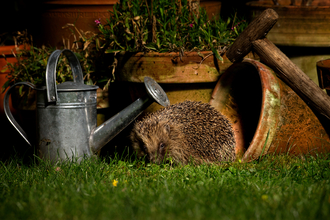An undisturbed habitat pile made of logs, fallen leaves, twigs, bark and other natural materials is the ideal safe spot for many pollinators to lay their eggs in the autumn. Some adult butterflies will hide away in them too.
What you'll need
As a foundation for the habitat pile you’ll need logs of varying sizes and any combination of the following natural materials:
- Twigs, sticks, and dead wood
- Dry leaves
- Straw
- Grass clippings
- Pinecones
- Rocks and stones
Creating your habitat pile
1. Location - Select a sheltered, semi-shaded spot in your garden or woodland area, ideally near a hedge, fence, or shrubs. This will help protect the pile from extreme weather conditions while allowing insects to move in and out freely.
2. Lay the foundations - Begin by placing a layer of large logs or branches directly on the ground. These will serve as the core of your habitat pile and create gaps for insects to nest or hibernate.
3. Add variety - Get creative and add a mixture of your natural materials to your habitat pile, remembering to stack things loosely in order to create gaps and cavities.
4. Avoid disturbance- Leave your habitat alone so that insects can shelter safely without disruption.
5. Maintain and monitor - Over time, your habitat pile will naturally break down and decompose, which is perfect for the insects. You can occasionally add more twigs, leaves, or branches to replenish the pile.
Inspired to create a pollinator-friendly garden? Pledge to support pollinators as part of our Nature Neighbours campaign and plot your garden on our virtual map.






